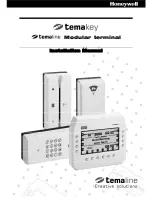
Intégration Guide_iUC150&iUC180
46/70
Copyright © 2012 Ingenico
900009816 R11 000 01/1223
All rights reserved
The system manages access to all the terminal’s peripherals. Access is achieved
through standard C primitives for all the input/output peripherals (keypad…) and
through specific primitives for the other peripherals (smart cards and magnetic stripe
cards). Further, the system takes charge of memory management. It allocates
memory space to the software applications and access control.
The multi-application manager is the entity, which calls the various applications
downloaded in the terminal in response to the various events that occur in the
terminal.
The UCMC component interfaces between the applications and the peripherals
(PINPad, Reader, Printer…). This makes the applications independent of the
peripherals.
It can also manage the « transaction flow ».
The applications are modeled around the demands made by the multi-application
manager. Each request or input point represents a processing operation to be
performed. Each application manages the execution of these processing operations
according to its specifications. This standardization based on input points simplifies
the implementation of the applications on terminals. The terminal provides natural
access to the modularity concepts and improves the maintainability and quality of the
applications.
3.1.2 Secure management of software
The terminal is designed to execute authentic software only and to do this in a ranked
context.
The terminal performs the following checks:
1. During a software download, the terminal checks :
•
Its authenticity, by checking its signature with the RSA algorithm with a
2048 bit key.
2. Before running a software, the terminal checks :
•
Its presence by looking for the software’s identity.
•
Its integrity by checking checksums and CRCs.
















































